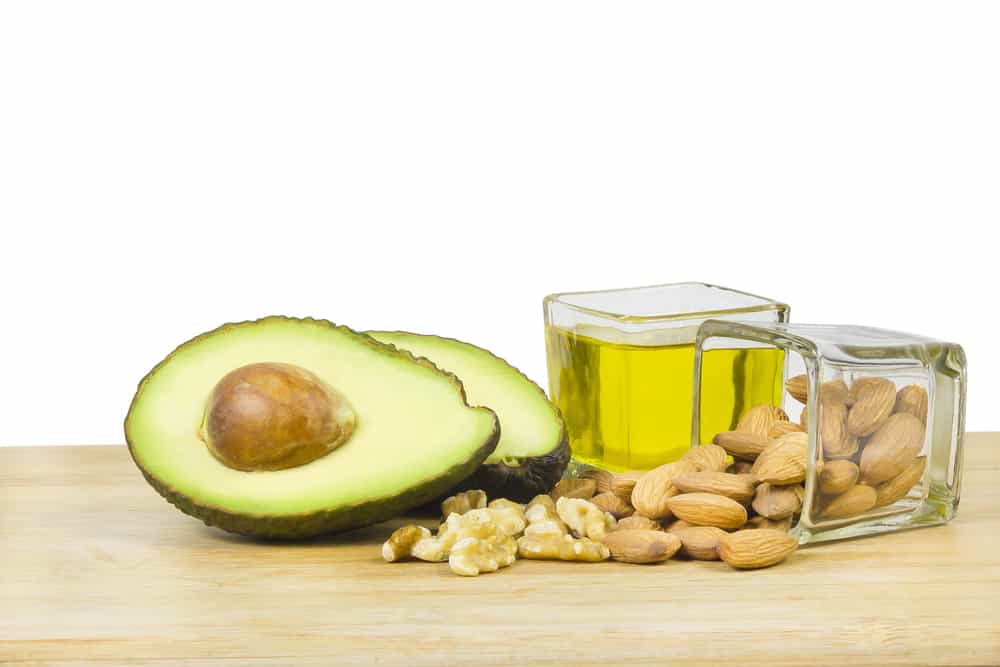Shake That Weight ™ • 2nd September 2015 • 9 years ago
Good Fats vs. Bad Fats

Dietary fat is one nutrient with a serious image problem. Fat in food is equated to fat on hips—but it’s not the same! Our bodies need certain fats. Getting the right amounts from the right sources will not only ensure your food doesn’t taste like cardboard, but also can help you lose those stubborn pounds (yes, you read that correctly).
Fat’s Larger Purpose
The main reason fat gets a bad rap is that much of the type we eat comes in less-than-healthy packages like doughnuts and chips. The fact that we’re wired to crave the flavour fat provides makes it even easier to overeat. Back when mammoth was still a menu item, calories were hard to come by. Humans evolved to seek out the most concentrated supply of them, and fat, with nine calories per gram (versus four per gram in carbs and proteins), was our best food source for survival.
Though we no longer need that primitive urge to keep us alive, fat still plays a critical role: It delivers key nutrients to your body. Vitamins such as A, D, E, and K are called fat-soluble because they need to bind to fat to be absorbed, if fat isn’t available, the vitamins can’t be absorbed properly. Top your salad with low-fat dressing and you could miss out on a lot of the benefits in those leafy greens—which can also leave you longin for a snack later. Part of losing weight is being satisfied so you aren’t grazing all day on other foods, and studies have found that foods with healthy fats, like avocado and nuts, take longer to digest and therefore help keep you fuller longer.
The Low-Fat Lie
Approaching fat the way you do the limbo—how low can you go?—won’t send the scale plummeting. CDC data shows that while Americans consumed a lower percentage of calories from fat in 2000 than they did in 1971, the total number of calories consumed by women per day increased by more than 300! This is likely the result of manufacturers replacing the fat in foods with sugar. The ‘low fat’ message was interpreted as an invitation to indulge without keeping calories in mind.
Cutting all fat from your diet means you’ll also miss out on good fats that can help you in your quest to shrink a size. A study in the journal Diabetes Care found that a diet rich in monounsaturated fats (such as almonds) may prevent the accumulation of abdominal fat. Fat is all about the source it comes from. Combining fats and carbs in the same meal will keep your blood sugar stable and help you avoid hunger-inducing spikes and dips.
This isn’t license to gorge on one enormous cinnamon roll, though. Spread your fat-carb combos throughout the day: natural nut butter on whole-grain toast in the a.m., olive oil drizzled on your salad at lunch, guac with veggies for a snack.
One to Avoid
For all the friendly types of fat, there is one you should keep as an enemy: man-made trans fats, which have been shown to raise bad (LDL) cholesterol and lower good (HDL) cholesterol. Unlike other unsaturated fats, which tend to have health benefits, these have been chemically altered through a process called hydrogenation to make the product they are in easier to sell (for example, some packaged cookies contain hydrogenated or partially hydrogenated fats to make them last longer on store shelves).
Unfortunately, you may not even be aware they’re in a product, thanks to tricky labelling laws that allow manufacturers to list zero grams of trans fat as long as a serving contains less than 0.5 grams. To avoid them, stay away from food whose ingredients panel lists hydrogenated or partially hydrogenated oils.
Finally, always remember to watch your portions, even with good fats. Fat in any form packs more than twice the amount of calories as protein and carbs. Often, people eat the right foods but too much of them, olive oil is the number one offender among her clients. A cup has close to 2,000 calories, and unless you’re a stickler for measuring, it’s easy to pour on more than the proper two-teaspoon serving. Bottom line: In small doses, fat is one of your best food friends.
References:
https://www.webmd.com/diet/obesity/features/skinny-fat-good-fats-bad-fats
https://www.nutrition.org.uk/healthyliving/helpingyoueatwell/fats.html
https://www.nhs.uk/live-well/eat-well/different-fats-nutrition/








